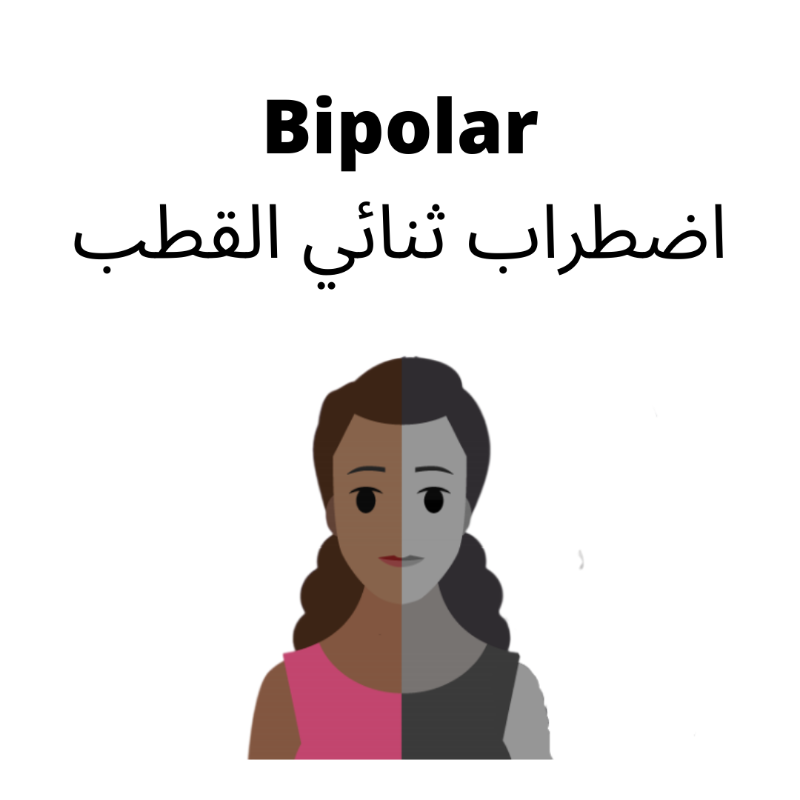What is Bipolar Disorder?
People with bipolar disorder suffers from unusual mood changes, they go from extremely happy to extremely sad in no time. They often have normal moods in between, the up (happy) mood is called mania and the sad mood is called depression. The causes of bipolar disorder aren't always clear. It runs in families. Abnormal brain structure and function may also play a role. Bipolar disorder often starts in the beginning of your adult year or you late teens.
Different types of bipolar disorder?
Cyclothymic disorder: This type includes manic and depressed episodes that span at least two years in adults or one year in children and adolescents. Compared to bipolar disorder I or II, the symptoms are less severe.
The terms "unspecified" or "other specified" bipolar disorder (previously known as "bipolar disorder not otherwise specified") are now used to refer to conditions in which a person only exhibits a small number of the mood and energy symptoms that characterize a manic or hypomanic episode, or in which the symptoms may not last long enough to be considered as distinct "episodes."
Rapid cycling is a term used to characterize the course of the illness in people with bipolar I or II disorder; it is not a kind of bipolar disorder. It is applicable when there are four or more mood episodes within a year. This sort of illness course affects women more frequently than males, and it can appear and disappear at any point during the course of bipolar disorder. Rapid cycling has a higher risk of suicide thoughts or actions and is primarily fueled by depression.
Symptoms Of Mania
The extreme mood swings of bipolar disorder do not occur in a predictable way. Before shifting to the opposite mood, a person may experience the same mood state (depressed or manic) multiple times. These episodes can take place over the course of several weeks, months, or even years.
The degree to which it worsens varies from person to person and can also alter over time, worsening or lessening.
Mania symptoms ("the highs"):
excessive joy, optimism, and excitement
Sudden shifts from happiness to irritation, rage, and hostility
Restlessness
Poor attention and rapid speech
reduced need for sleep and more energy
unusually strong sex urge
formulating ambitious and irrational plans
displaying bad judgement
misuse of alcohol and drugs
increasing impulsivity
Less need for sleep
Less of an appetite
Larger sense of self-confidence and well-being
Being easily distracted
Symptoms during depressive periods
Sadness
Loss of energy
Feelings of hopelessness or worthlessness
Not enjoying things they once liked
Trouble concentrating
Forgetfulness
Talking slowly
Inability to feel pleasure
Uncontrollable crying
Trouble making decisions
Needing more sleep or no sleep at all
Appetite changes that make you lose or gain weight
Thoughts of death or suicide
Attempting suicide
Treatments
Bipolar disorder is treatable. Long-term treatment is required for this illness. Forms of the condition that are considerably tougher to cure can affect people who experience four or more mood episodes each year or who additionally struggle with drug or alcohol abuse.
A lot can change with treatment. You can feel better with a combination of factors, including skilled medical attention, medicine, talk therapy, lifestyle modifications, and the support of friends and family. There is no recognized treatment for bipolar disorder, often known as manic depression. It is a lifelong management requirement for a chronic health condition. Many persons with this illness lead fulfilling lives; they have families, careers, and typical daily routines.
تصميم موقع . كم

.png)
.png)
.png)
.png)